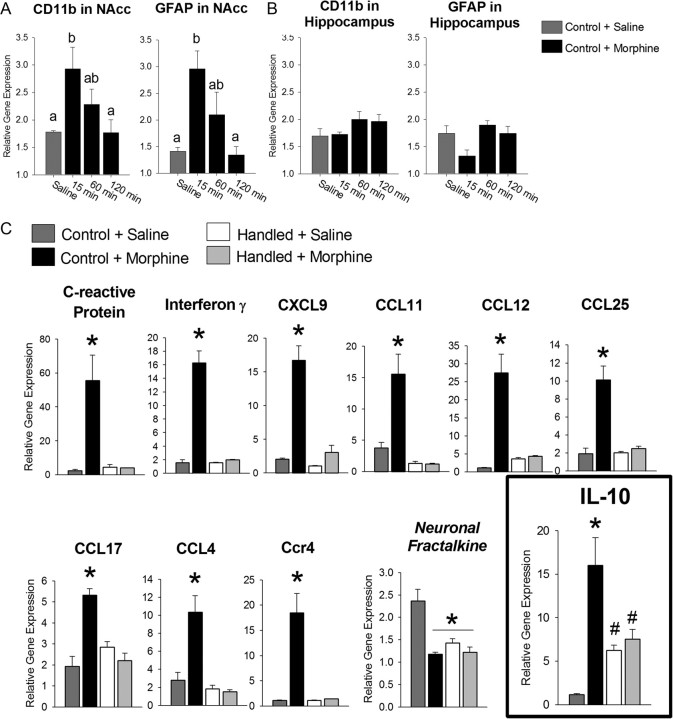Figure 1.
Morphine induces a rapid increase in the expression of glial activation markers within the NAcc, but not in the hippocampus, and a rapid and robust increase in cytokine and chemokine expression within the NAcc that is blocked by neonatal handling. Nonhandled control rats were treated with morphine (4 mg/kg) or saline and brains were collected 15, 60, or 120 min later. Analysis of CD11b, a marker of microglial activation, and GFAP, a marker of astrocyte activation, was performed on microdissections of the NAcc and the hippocampus of the same animals. A, CD11b and GFAP mRNA were significantly upregulated within the NAcc of control rats 15 min following morphine treatment (p < 0.05, when compared to saline-treated controls). Sixty minutes after morphine administration, CD11b and GFAP mRNA levels were declining such that they were no longer significantly different from either saline-treated controls or levels measured at 15 min. Different letters represent significant differences between groups. B, Within the hippocampus, CD11b and GFAP mRNA were not significantly upregulated at any time point following morphine administration. C, Eleven genes showed a significant interaction following analysis with a two-way ANOVA. Morphine significantly increased the expression of 10 inflammatory genes and significantly decreased the expression of one neuronal cytokine (CX3CL1/fractalkine). Neonatal handling significantly blocked the morphine-induced changes in gene expression for all genes, except CX3CL1, which was significantly downregulated in handled rats when compared to nonhandled control rats treated with saline. IL-10 mRNA showed a significantly different pattern than other genes, as IL-10 mRNA was significantly upregulated in handled rats in the absence of morphine. Treatment of handled rats with morphine had no effect on IL-10 mRNA levels within the NAcc. (IL-10: *p < 0.05 compared to all other groups; #p < 0.05 compared to nonhandled control plud saline).

